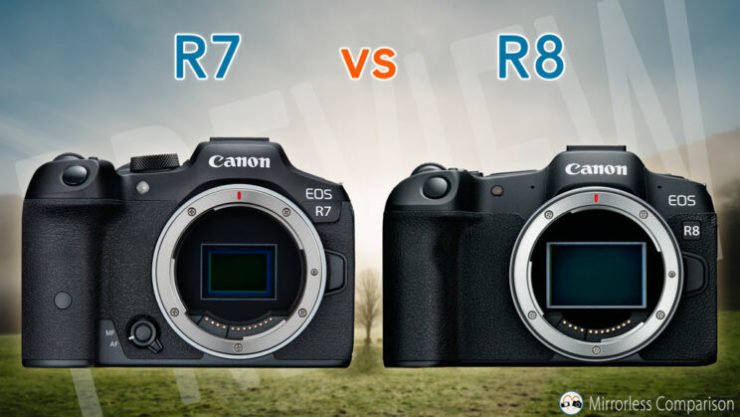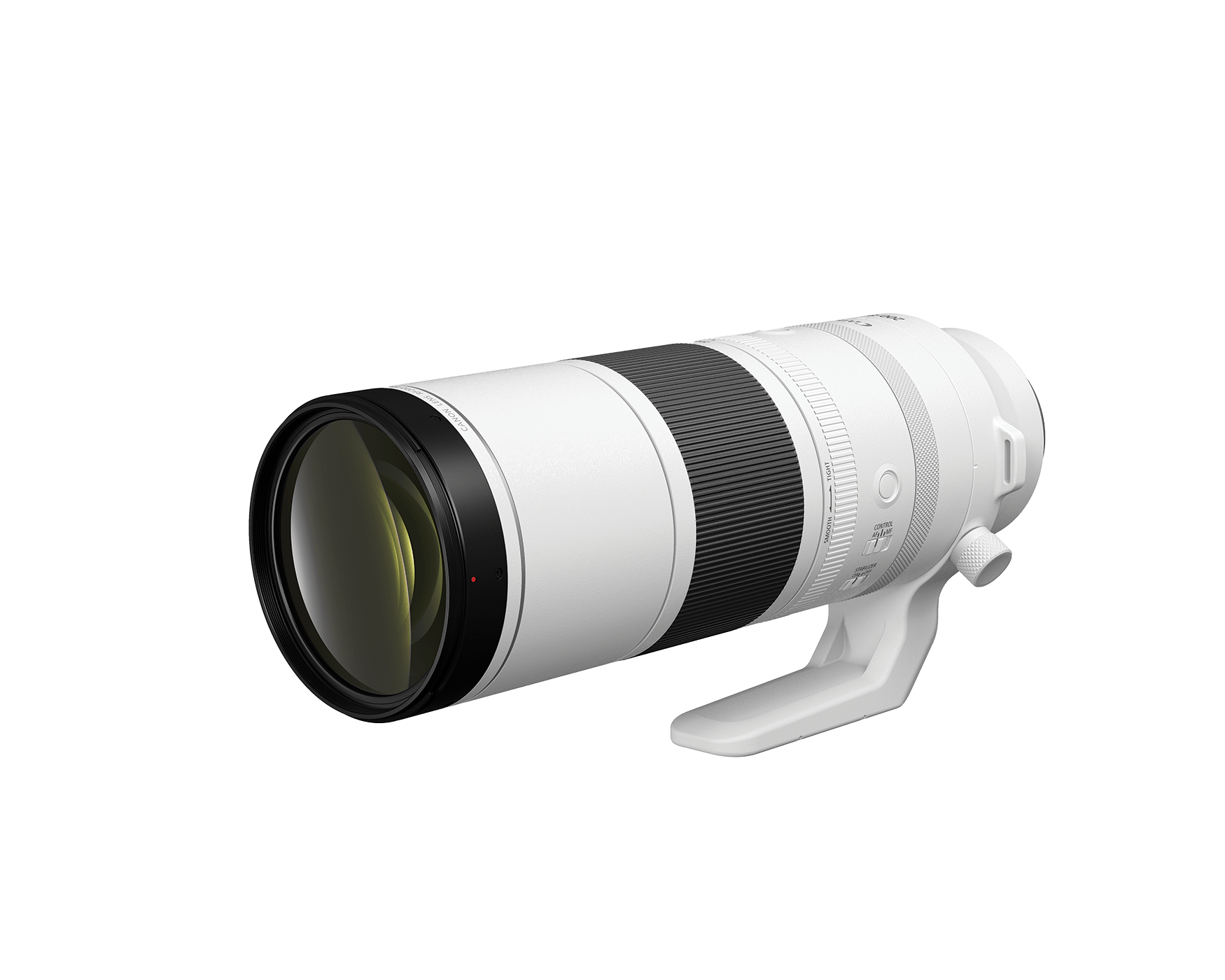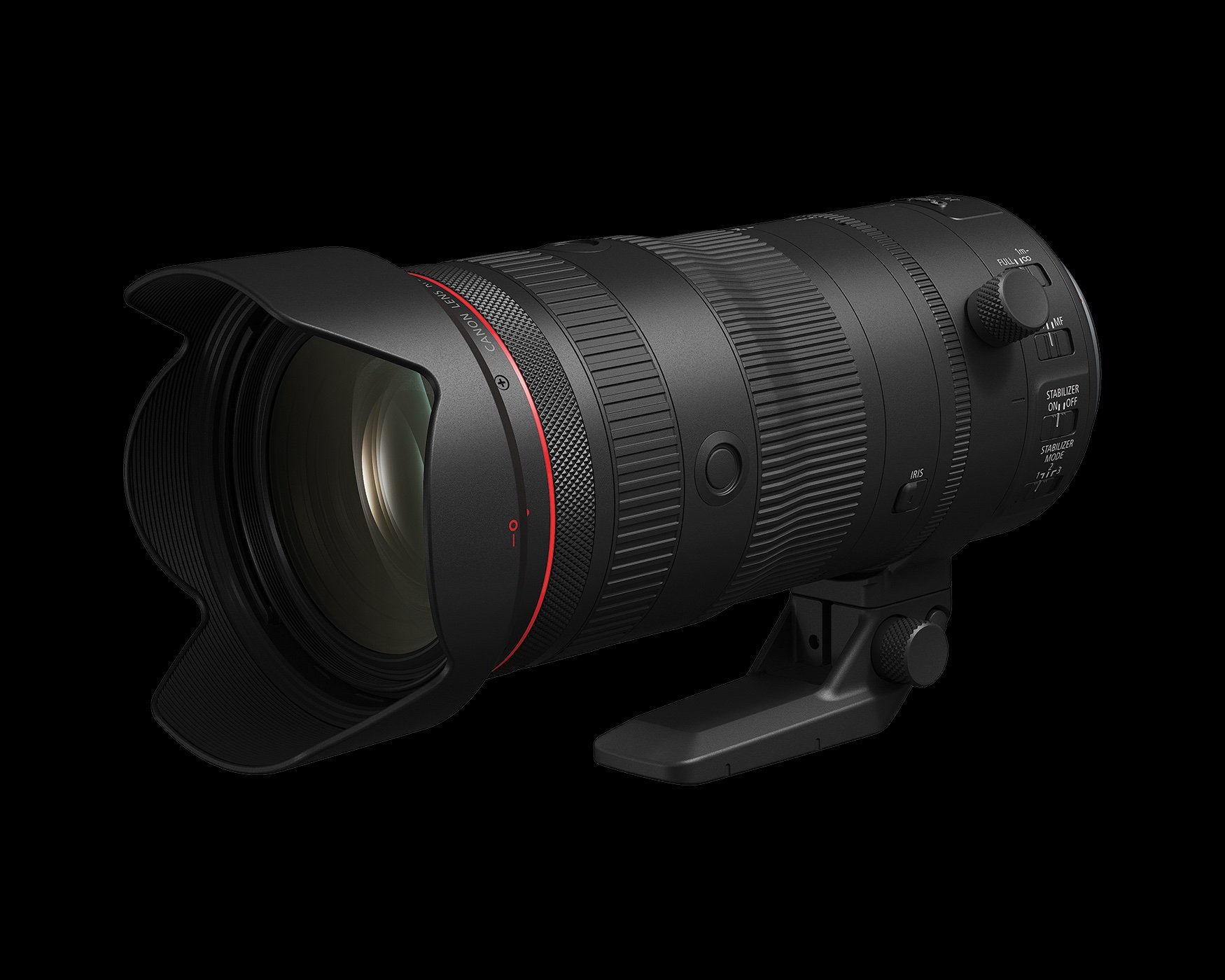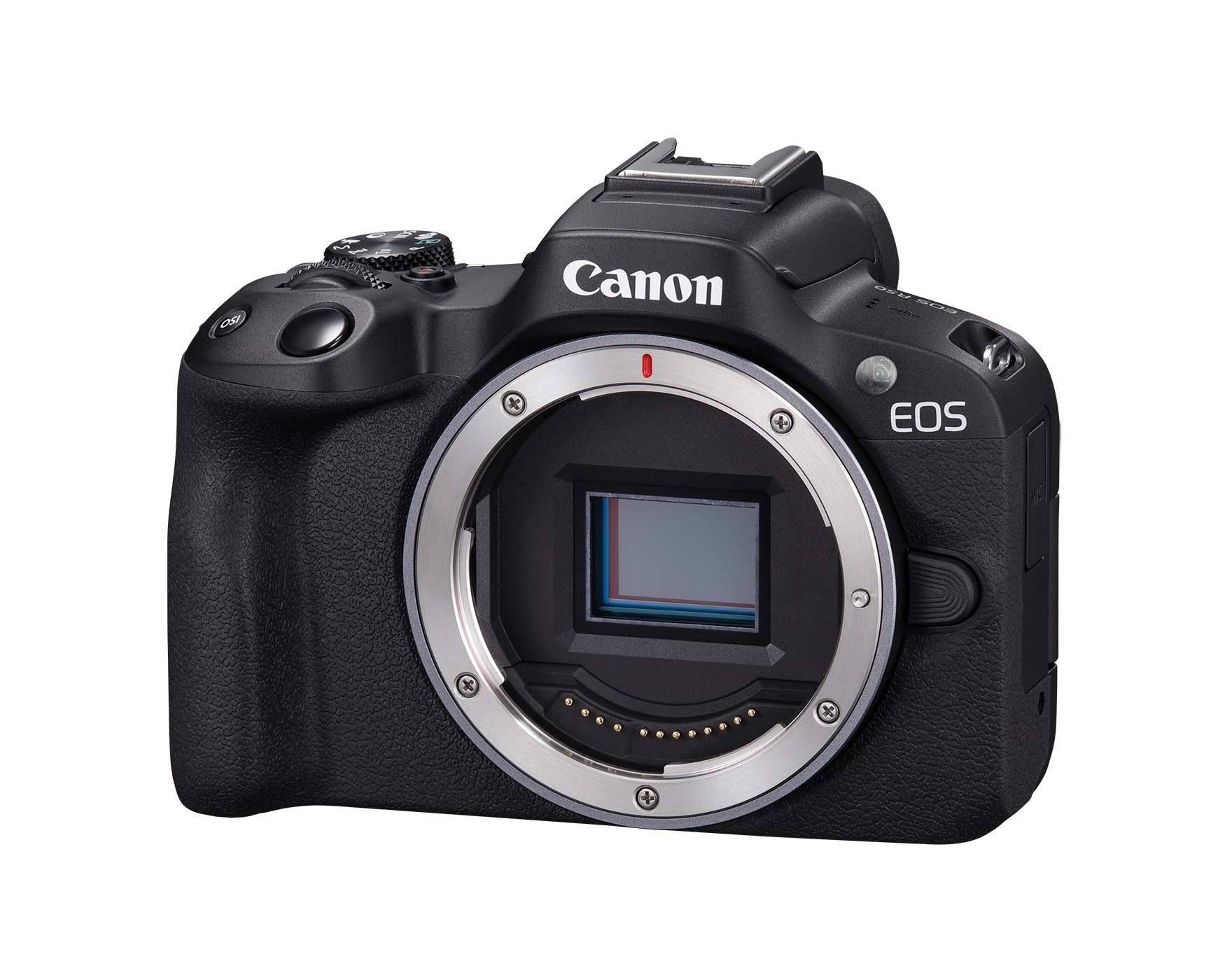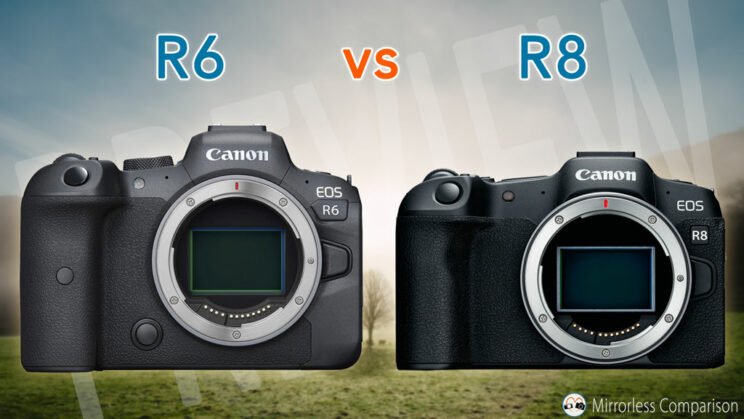Here is a round-up of hands-on reviews and previews of the brand new Canon RF…
Canon EOS R7 vs EOS R8 Comparison Review, And 10 Main Differences
Here is a Canon EOS R7 vs EOS R8 comparison review, and a highlight of the 10 main differences.
Canon EOS R7 at a glance:
- 32.5MP APS-C CMOS Sensor
- Dual Pixel CMOS AF II
- 4K60 10-Bit Video, HDR-PQ & C-Log 3
- 30 fps E. Shutter, 15 fps Mech. Shutter
- 2.36m-Dot OLED EVF
- 1.6m-Dot Vari-Angle Touchscreen LCD
- Sensor-Shift 5-Axis Image Stabilization
- Dual UHS-II Memory Card Slots
- Multi-Function Shoe, Wi-Fi and Bluetooth
Canon EOS R8 at a glance:
- 24.2MP Full-Frame CMOS Sensor
- 4K60p 10-Bit Internal Video, Canon Log 3
- 2.36m-Dot OLED Electronic Viewfinder
- 3.0″ 1.62m-Dot Vari-Angle Touchscreen
- Dual Pixel CMOS AF II
- 40 fps Electronic Shutter
- Movie Digital IS
- Vertical Movie Mode
- Microphone Input, Headphone Output
- Multi-Function Shoe, Wi-Fi & Bluetooth
Coming from our friends at Mirrorless Comparison, here is a neat Canon EOS R7 vs EOS R8 comparison review. The 10 main differences are:
- Sensor: The R7 offers higher resolution, but the larger sensor of the R8 delivers greater dynamic range and less noise at high ISO.
- Video: Sharpness and dynamic range are very similar, but the R8 provides better quality in 4K 50/60p due to oversampling, while the R7 employs line-skipping. The full-frame camera also exhibits less rolling shutter and noise at high ISO. On the other hand, the APS-C model excels in internal heat management.
- Stabilisation: The R8 lacks in-body stabilization, requiring reliance on lenses with optical stabilization. This gives the R7 and its IBIS mechanism an advantage in scenarios involving slow shutter speeds, or when walking during video sequences. Surprisingly, the R8 paired with an IS lens performs better when recording static shots.
- Shutter Mode: The R8 doesn’t feature a full mechanical shutter, utilizing only the EFCS (Electronic-First Curtain Shutter), which can introduce limitations under specific conditions and settings.
- Continuous Shooting Speed: With the electronic shutter, the R7 operates at up to 30fps, while the R8 achieves a faster 40fps. The full-frame camera exhibits less rolling shutter, a weak point in the R7. The buffer performance is more or less comparable.
- Autofocus: The R8 employs more advanced software, resulting in better detection of humans, animals, and vehicles. It also offers greater consistency in keeper rate and focus precision, especially in low-light conditions and when capturing birds in flight.
- Design: The R7 boasts a larger grip, an AF joystick, and additional buttons. The EVF and LCD screen remain the same.
- Battery Life: The R7 employs a larger battery and can last significantly longer, particularly in video mode.
- SD Cards: Only the R7 comes equipped with two card slots.
- Price and Lenses: The cost is relatively close in the U.S., but the R8 is pricier in Europe. Currently, there are only three native RF lenses designed for APS-C cameras. R7 users must rely on full-frame EOS R lenses or adapt Canon’s DSLR lenses. Support for third-party brands remains uncertain at the moment.
Read the full and exhaustive Canon EOS R7 vs EOS R8 review at Mirrorless Comparison, it comes with charts, ISO comparison and everything your pixel peeping heart might wish. Or you can watch the video below.

